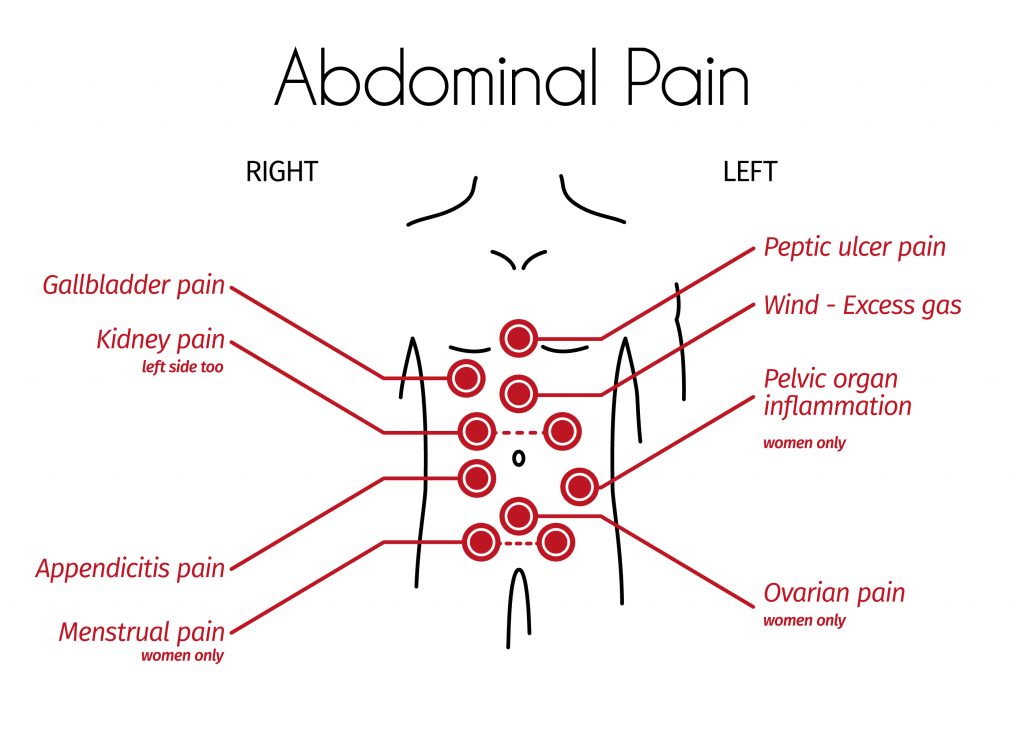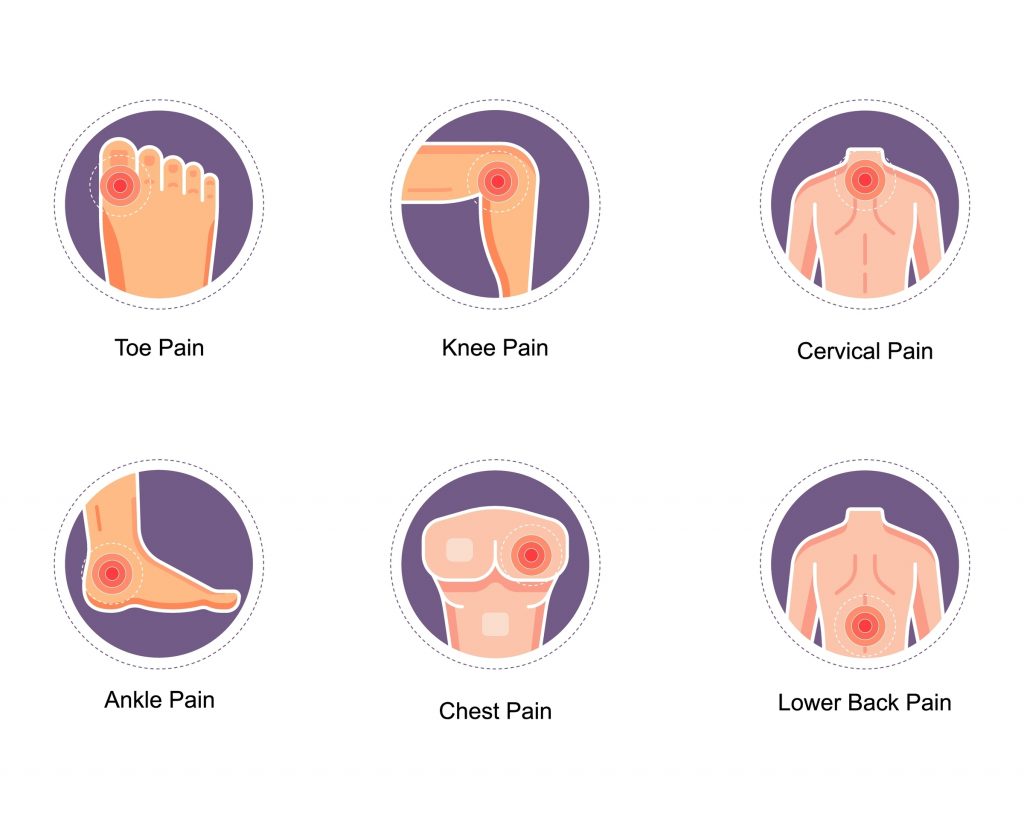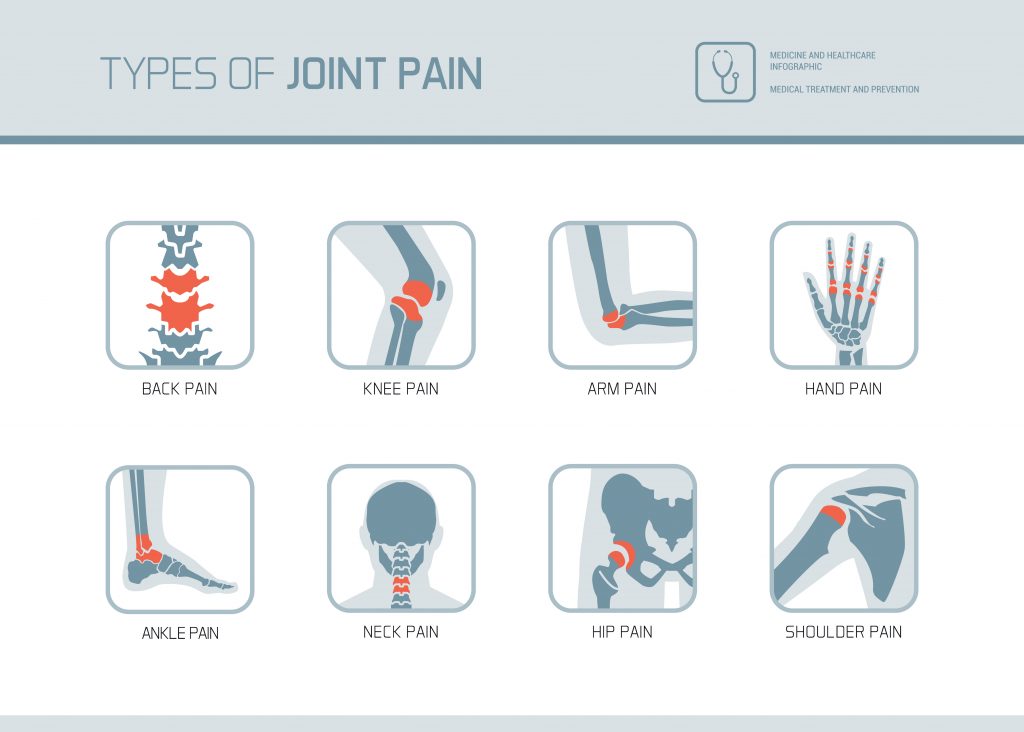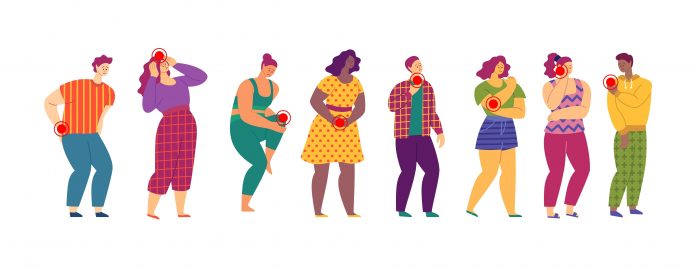An uncomfortable feeling, ranging from a prick or tingle to a severe throbbing or pulsating sensation. Everyone suffers from it due to some reason, which could be very mild, or an indication of a deeper illness.
We often tend to ignore the aches and pains in our body, though it’s our nervous systems way of signaling that something is wrong. Most people will try home remedies, like in ice pack, oil massages, and poultice. There are, however, a few conditions, which definitely shouldn’t be ignored.
So, what could the pain indicate? It depends on the body part affected, and the reasons could be as simple as a sprain. It could also be a more severe condition, requiring extensive checkups and treatment.
Abdominal pain
Abdominal pain can be due to a lot of reasons, depending on the area affected. It could vary from mild to excruciating, constant to spasmodic, depending on the cause.
- Right sided
A sudden, unbearable pain in the right lower side of the abdomen could be appendicitis, an infection in the appendix. It can be accompanied by nausea and vomiting.
Pains in the upper right abdomen, increasing in intensity gradually, can be indicative of gall stones. It is usually accompanied by indigestion, nausea, a sensation of heaviness in the abdomen. In extreme cases, the gall bladder ruptures, making it an emergency.
- Kidney stones
A sharp shooting pain starting from the back and radiating forwards could be due to renal calculi. The pain typically occurs when the stone moves from its position; it could be accompanied by bleeding in urine.

- Lower abdominal
A pain in the lower abdomen could be due to urinary infection or an intestinal disease, like obstruction.
- Dysmenorrhea – Menstrual cramps are pains experienced by women before, during or after their monthly cycle. Though they are usually tolerable, at times the pains could be too extreme and require medical intervention.
Chest pain
We usually associate chest pain with a cardiac eventuality. However, there can be other reasons for experiencing pain in the chest region.
- Myocardial Infarct – A myocardial infarct (heart attack) can present with severe pain in the chest, sometimes radiating to the left arm. The person often complains of restlessness and excessive perspiration.
Recurrent chest pain, called angina pain, is also heart related, caused by inadequate blood flow to the heart.
- Acidity – Acidity, too, can present with pain in the chest. It is usually accompanied by burning sensation in the chest region and nausea. There could be a history of eating spicy food, or fasting for a long time.
- Pulmonary embolism – A blockage in one of the pulmonary arteries, presents with unexplained pain or pressure in the chest, possibly radiating to the jaw or back. The person may also complain of shortness of breath.
A pneumothorax – air or gas in the chest cavity- can also present with similar symptoms.
Back pain
Backache is one of the most common pains people experience. We usually tend to either ignore them or take them in stride. But at times, they need to be taken seriously.
The causes could be mechanical (due to injury, muscle strain) or radicular (a pinched nerve, with the pain radiating along its path)
- Upper back – extends from the nape of neck to just below the rib cage .The common reasons for pain in this area is postural or injury. Sometimes, a spinal disc herniates (slip disc), and if it presses on a nerve, you could have severe pain.
One of the more critical reasons for upper backache can be aortic dissection- a condition in which there is a tear in the aorta, causing an internal bleed
- Lower – Also called the lumbar region, the lower back extends from just below the ribcage to the sacrum. Pain in this region is common and everyone complains about it at some point in their life. The pain is usually exertional, postural or due to an injury. Obesity and age related degeneration also contributes to lower backache.
Though not common, the pain could also be a symptom of spinal tumors.
Types – acute: Begins suddenly and lasts few weeks. Responds to rest and home remedies.
Sub-acute : persists from 6 weeks to 3 months, and it may require investigations and medical intervention.
Chronic : Lasting over 3 months, this pain can be moderate to severe and may not respond to treatments, requiring medical and/ or surgical intervention.

Headache
Most of us have suffered through a headache at some time orb the other. There are a lot of reasons for a headache- stress, hypertension, fever, to name a few.
- Migraine – A migraine is generally described as a one sided headache, shooting or hammering. It is sometimes preceded by an “aura”- a sensation which people recognize as the beginning of migraine. Migraine can be accompanied by nausea, vomiting, intolerance to light. There is usually a triggering factor which causes migraine; it could be sun exposure, hunger, very bright light.
- Aneurysm – A brain aneurysm is a ballooning of the blood vessel of the brain, which has a tendency to rupture, causing a hemorrhage. The bursting aneurysm causes pain, described as excruciating, the worst pain ever experienced. It could be accompanied by neck stiffness, sensitivity to light, double vision, confusion or unconsciousness.
A brain tumor also gives rise to headaches, which are aggravated at night, while sleeping or just after waking up. Sneezing or coughing can aggravate these headaches too.
Ophthalmalgia (Eye pain)
Eye pain is usually the result of an injury- a foreign particle in the eye, wearing lenses for a long time. But there are certain conditions giving rise to deeper, more severe issues.
Ocular pain is more superficial, caused by rubbing the eye or presence of a foreign object. It is often accompanied by burning or itching. Washing the eye and anti-allergic eye drops usually give relief.
Orbital pain is more severe, could be shooting or gritty. It requires a closer investigation and treatment. Some of the causes of orbital pain are:
- Glaucoma – Affecting the optic nerve, this disease is characterized by increased intra ocular pressure. Along with pain the individual could also complain of nausea, patchy or blurred vision and redness of the eye. Left untreated, glaucoma leads to blindness.
- CVS – Pain, eye strain or blurred vision, with a prolonged history of exposure to the computer, points towards Computer Vision Syndrome.
- Optic neuropathy – An umbrella term, this covers all the reasons that cause damage to the optic nerve, which sends visuals from your eye to the brain, enabling you to see. The damage is due to inadequate blood supply to the nerve; the causes are varied – inflammation, clots, nutritional deficiencies. The symptoms include pain in the eye socket, flickering vision or loss of vision on one side.
Jaw pain
Jaw pain is not only common, but also debilitating, as it hinders the ability to chew and swallow food. The causes can be infections, tooth cavities, TMJ disorders. It can also be a sign of a heart attack, with the pain radiating from the chest to the jaw.

General bone pains
Bone pains are fairly common, especially as one ages. They are described as severe, deep seated pains, often aggravated at night. The causes are many- injury, Calcium and Vit D3 deficiency, and osteoporosis. However, it is also one of the signs of bone cancer. Any unexplained bone pains should be thoroughly investigated.
Joint pain
Joint pains are usually experienced by elders, due to wear and tear of the muscles and tendons holding the joint together. Dislocations, injuries, fractures can also cause joint pains.
- Degenerative changes
Degenerative changes are commonly seen in the hip or knee joints, with the cartilage between the bones breaking down. These are slowly progressing conditions, accompanied with stiffness of joints, and difficulty in using them. Advanced cases have to undergo surgical replacement of joints.
- Rheumatoid changes
An auto immune condition, this is characterized by pain, inflammation and joint stiffness, especially in the mornings. The person could also suffer from fever, fatigue and weight loss.
Heel pains –
Heel pains are often felt due to ill-fitting footwear or pressure on the heels for an extended period of time, such as standing or walking for a long time. The other reasons are:
- Spur – Spurs are caused by calcium deposits in the back or lower portion of the heel, causing pain and inflammation around the joints.
- Plantar fasciitis – Plantar fascia is a thin and long tissue band connecting the heel to the front of the foot. Pressure or an injury to this tissue results in inflammation, in turn giving rise to pain and stiffness of the heel joint.
Calf pain –
Calf pains can be a result of exertion or strain. However, a severe, sudden pain in the calf can be due to a condition called DVT (deep vein thrombosis), formation of clots in the deep veins of the calves. These clots can travel anywhere in the body, and prove dangerous. There is usually a history of immobility due to bedrest or long travel times. It could be accompanied by hyperpigmentation of the calf skin; it may also feel hot to the touch.
Pain in big toe –
Pain in the toe can be quite annoying, and at times cause difficulty in walking. Fractures, in growing toenails, stubbing can all cause this pain. Systemic illnesses such as gout are known to affect the big toe, with severe, intolerable pain, swelling and tenderness.
Dysuria
Painful urination generally makes people think of a urinary tract infection, treated with anti-biotics. However, it could also be a sign of prostate or bladder cancer. A recurrent pain while urinating should be brought to the attention of a physician. Also, keep an eye out for bleeding, weight loss, reduced appetite- they all could point toward a serious illness.
Testicular pain
A sharp, intolerable pain, usually one sided, can be indicative of testicular torsion, a condition in which the blood flow to the testes is cut off. It is an emergency, and the individual should be rushed to the hospital. If ignored, the reduced blood flow will cause damage to the testicles.
Other causes are injury, infections or testicular cancers, but the pain in these cases is either temporary or of gradual ascent.
Neck pain
The neck is one of the most common areas for pain and stiffness. Bearing the weight of the head, the neck is vulnerable to pain due to injuries, and can result in restricted movements.
- Positional – Postural pain is one of the common complaints, caused by long periods of sitting in front of laptops or sleeping in the wrong position. Besides pain, people might also complain of stiffness of the neck muscles.
- Cervical Spondylosis – A condition in which the vertebrae in the neck area degenerate. The pain can vary from mild to excruciating, at times with inability to move the neck. The person might also experience numbness in the hands or fingers.
- Meningitis – Neck stiffness and pain, along with a high fever, is one of the classic clinical signs of meningitis, and shouldn’t be ignored.
Breast Pain-
Heaviness and mild pain in the breast tissue is a common symptom of premenstrual syndrome- many women suffer through it on a monthly basis. Unfortunately, breast cancer can also present with similar symptoms; it’s often difficult to differentiate between the two on clinical history alone. It’s better to get yourself investigated to reach a conclusive diagnosis. If you feel hardness or a lump, with pain or even without, then you definitely need to meet your physician.
Pains due to wounds
These are usually temporary and will disappear within a few days, at the most. However, if it doesn’t, and is accompanied by swelling and /or oozing from the wound, it could indicate an infection, requiring antibiotics. Diabetics, in particular, need to be careful, as the healing process is impeded by the high sugar levels.
Though it’s true that most pains are usually treatable with home remedies and rest, it’s always better to be vigilant and informed. Timely medical intervention can help prevent extended illnesses and morbidities.









Interesting